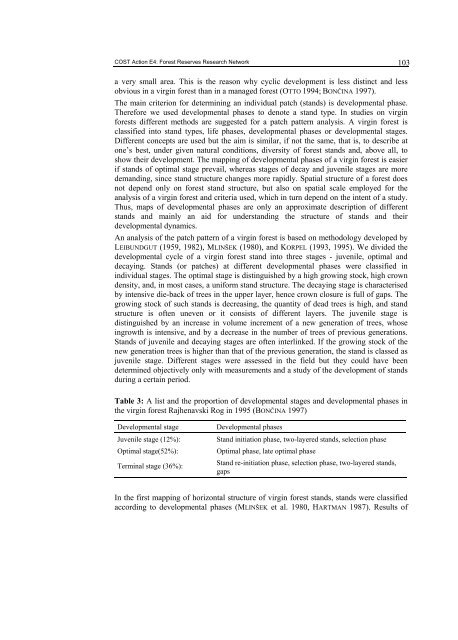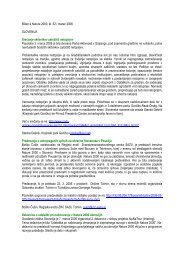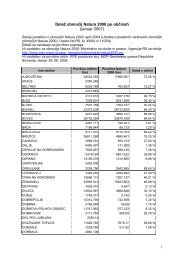VIRGIN FORESTS AND FOREST RESERVES IN ... - Natura 2000
VIRGIN FORESTS AND FOREST RESERVES IN ... - Natura 2000
VIRGIN FORESTS AND FOREST RESERVES IN ... - Natura 2000
You also want an ePaper? Increase the reach of your titles
YUMPU automatically turns print PDFs into web optimized ePapers that Google loves.
COST Action E4: Forest Reserves Research Network 103<br />
a very small area. This is the reason why cyclic development is less distinct and less<br />
obvious in a virgin forest than in a managed forest (OTTO 1994; BONČ<strong>IN</strong>A 1997).<br />
The main criterion for determining an individual patch (stands) is developmental phase.<br />
Therefore we used developmental phases to denote a stand type. In studies on virgin<br />
forests different methods are suggested for a patch pattern analysis. A virgin forest is<br />
classified into stand types, life phases, developmental phases or developmental stages.<br />
Different concepts are used but the aim is similar, if not the same, that is, to describe at<br />
one’s best, under given natural conditions, diversity of forest stands and, above all, to<br />
show their development. The mapping of developmental phases of a virgin forest is easier<br />
if stands of optimal stage prevail, whereas stages of decay and juvenile stages are more<br />
demanding, since stand structure changes more rapidly. Spatial structure of a forest does<br />
not depend only on forest stand structure, but also on spatial scale employed for the<br />
analysis of a virgin forest and criteria used, which in turn depend on the intent of a study.<br />
Thus, maps of developmental phases are only an approximate description of different<br />
stands and mainly an aid for understanding the structure of stands and their<br />
developmental dynamics.<br />
An analysis of the patch pattern of a virgin forest is based on methodology developed by<br />
LEIBUNDGUT (1959, 1982), ML<strong>IN</strong>ŠEK (1980), and KORPEL (1993, 1995). We divided the<br />
developmental cycle of a virgin forest stand into three stages - juvenile, optimal and<br />
decaying. Stands (or patches) at different developmental phases were classified in<br />
individual stages. The optimal stage is distinguished by a high growing stock, high crown<br />
density, and, in most cases, a uniform stand structure. The decaying stage is characterised<br />
by intensive die-back of trees in the upper layer, hence crown closure is full of gaps. The<br />
growing stock of such stands is decreasing, the quantity of dead trees is high, and stand<br />
structure is often uneven or it consists of different layers. The juvenile stage is<br />
distinguished by an increase in volume increment of a new generation of trees, whose<br />
ingrowth is intensive, and by a decrease in the number of trees of previous generations.<br />
Stands of juvenile and decaying stages are often interlinked. If the growing stock of the<br />
new generation trees is higher than that of the previous generation, the stand is classed as<br />
juvenile stage. Different stages were assessed in the field but they could have been<br />
determined objectively only with measurements and a study of the development of stands<br />
during a certain period.<br />
Table 3: A list and the proportion of developmental stages and developmental phases in<br />
the virgin forest Rajhenavski Rog in 1995 (BONČ<strong>IN</strong>A 1997)<br />
Developmental stage Developmental phases<br />
Juvenile stage (12%): Stand initiation phase, two-layered stands, selection phase<br />
Optimal stage(52%): Optimal phase, late optimal phase<br />
Terminal stage (36%):<br />
Stand re-initiation phase, selection phase, two-layered stands,<br />
gaps<br />
In the first mapping of horizontal structure of virgin forest stands, stands were classified<br />
according to developmental phases (ML<strong>IN</strong>ŠEK et al. 1980, HARTMAN 1987). Results of

















